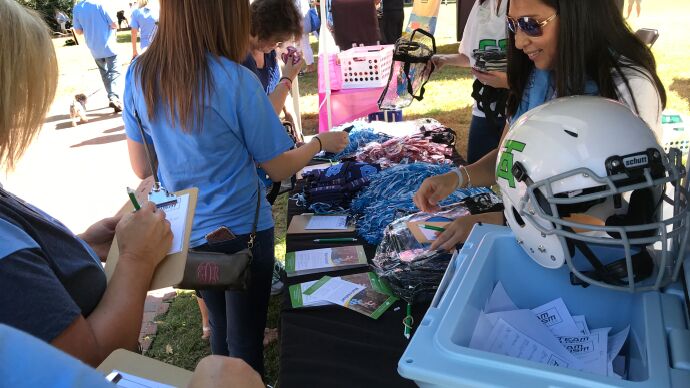
A recent study says late model cars are becoming safer in collisions. Yet, in a front-end car crash, female passengers wearing seat belts are much more likely than men to be seriously injured or killed.
A primary reason that women are at greater risk of suffering car accident injuries in front-end crashes could be the dummies involved with crash testing.
The study was conducted by researchers at the University of Virginia’s Center for Applied Biomechanics and published by the journal Traffic Injury Prevention. It is an analysis of crash and injury data compiled from the National Automotive Sampling System Crashworthiness Data System for the years 1998 to 2015. The data come from a sample of police-reported crashes in the U.S., UVA Today explains.
The data included nearly 23,000 front-end crashes involving more than 31,000 vehicle occupants, and a nearly equal number of women and men. Pregnant women who were past the first trimester were not included.
The study’s primary findings are that:
- The odds of sustaining a serious to fatal injury in a model year 2009 or newer motor vehicle are 55% less than in older vehicles. Safety features in newer vehicles mean occupants in a crash are less likely to suffer skull fractures, cervical spine injury, abdominal injury, and injury to the knee-thigh-hip region and the ankle.
- Female auto occupants wearing three-point seat and shoulder belts are 73% more likely to be seriously injured in frontal car crashes than belted male occupants.
- The difference in frontal car accident risk between men and women is greatest for injury to the lower extremities (knee-thigh-hip region and the ankle), but also occurs with several other types of injury.
- Vehicle occupants age 66 and older continue to be particularly susceptible to chest injury, likely resulting from increased fragility of the ribcage with advanced age.
What Happens in a Front-End Car Accident?
Essentially, a front-end car accident occurs when the forward-facing section of an automobile collides with something, such as another vehicle, a tree or a telephone pole.
The Insurance Institute for Highway Safety (IIHAS) says a frontal crash is the most common type of crash resulting in fatalities. The IIHS, which is the country’s leading crash-test organization, conducts three frontal crash tests:
- Moderate overlap test (formerly known as the frontal offset test)
- Driver-side small overlap test
- Passenger-side small overlap test.
Frontal crashes include head-on collisions. The National Highway Traffic Safety Administration (NHTSA) describes its frontal crash test scenario as:
“You are heading south on a two-lane road while another vehicle is driving north on that street. The driver in the other vehicle starts to fall asleep at the wheel and veers into your lane. Suddenly, you collide head-on with the northbound vehicle.”
In a head-on collision between two vehicles, the weight and momentum of both vehicles combine to compound the force of impact. A head-on collision at speed is likely to result in catastrophic injuries or death. While cars continue to be made safer, some collisions will leave vehicle occupants with serious or fatal injuries, regardless of the vehicles’ safety features.
A study at Indiana University found that head-on collision survival rates increase in newer vehicles and/or vehicles with a higher mass such as a sport utility vehicle or light truck. Other factors linked to improved survival rates include using a seatbelt and having an airbag deploy, and by being younger and being male.
Vehicle size makes the biggest difference in a head-on collision. With other factors equal, a person driving a passenger car is 17 times more likely to die than the driver of a light truck. The ratio is about nine times for a passenger car colliding with an SUV.
The IU researcher said he found that more women die in head-on collisions but could not explain why.
Why is Automotive Safety Failing Female Car Occupants?
It has long been understood that male drivers, especially young male drivers, were more like to be involved in car accidents. But the UVA study authors note that “there has recently been a trend toward an equal crash involvement rate between males and females.”
In addition to increasing likelihood of being in a crash, the greater risk of injury among women in car accidents may be due to their smaller size and the simple fact that women are built differently, the UVA study says.
“Things like differences in fat distribution, differences in muscle strength, differences in bone alignment, the pelvis is different. There are just a huge number of things that suggest that females are not smaller males,” Carolyn Roberts, a PhD student at UVA studying differences in automotive safety outcomes, told CBC News.
Meanwhile, most of the research over the last several decades has focused on developing injury metrics for mid-sized male occupants.
“We are improving automotive safety, tolerance, injury and fatality risk as a whole,” Roberts said. “However … we’re improving automotive safety for males at a faster rate than we’re improving automotive safety for females.”
Researchers and other experts say that’s because of a lack of available female-specific safety data, CBC News says.
The IIHS, famous for its crash-test dummies, is using dummies developed in the 1970s and modeled on the physique of military men of the 1960s. Prior to the creation of data-providing analogs, military men were used as guinea pigs when new vehicles and techniques were developed.
New crash-test dummies, which are equipped with as many as 150 data-collection points, take a long time to develop and are expensive. The few female dummies that are available, and which the IIHS and UVA center have, are essentially just a smaller version of a male dummy.
“We’re not including females in the data analysis, in the regulatory tests, in anything we do,” Roberts said.




